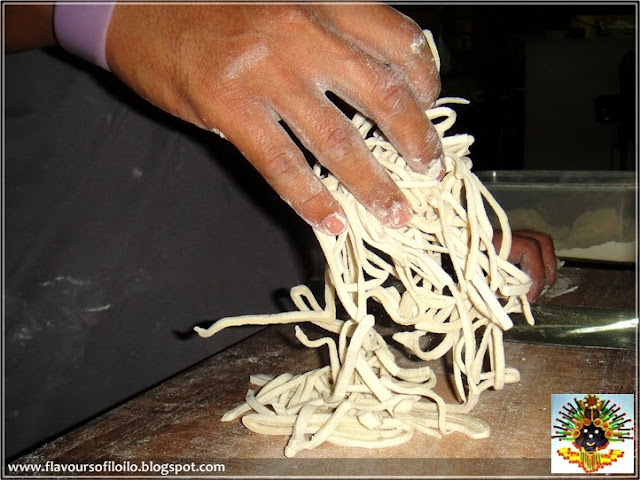A recent visit to Pancit-Pancit, made me realize what I've been missing in the last few months. Aside from the mouthwatering beef mami, I found out that they have something new on the menu - gyoza, kiam pung rice and soy egg, that goes with the beef mami. What makes Pancit-Pancit always a delicious food trip, aside from their beef mami, is the novelty. A hawker style food shop, it opens only after 5pm for it utilizes part of the sidewalk for its al fresco dining experience. And there, you'll see how you beef noodle soup is made literally from scratch.
It starts with a piece of dough that is rolled and flattened a few times to get the perfect consistency and thickness.
When it is achieved, it is then sliced into strips - thin enough to cook fast yet thick for it to be savoured. A quick "mix" of the sliced dough gives it a more noodle look.
It is then takes a "hot bath" in one of the makeshift boilers for it to cook and ready to become a dish.
On a separate "cauldron", a savoury beef stew/soup has is boiling and ready to be meet the pancit. I understand that this is already prepared/cooked beforehand for it to be ready for serving.
The cooked pancit is placed in a bowl together with greens and a chunk of beef. The hot beef soup completes the order of the popular beef mami.
Now, you can order with with soy egg added on your beef mami and have some gyoza and/or ma chang on the side. They also have kiampung rice which is a must order, if it's available. And again, that's it, pancit-pancit. And 'til we eat again.
 |
| Kiampung Rice |
 |
| Gyoza |
 |
| Ma Chang |








